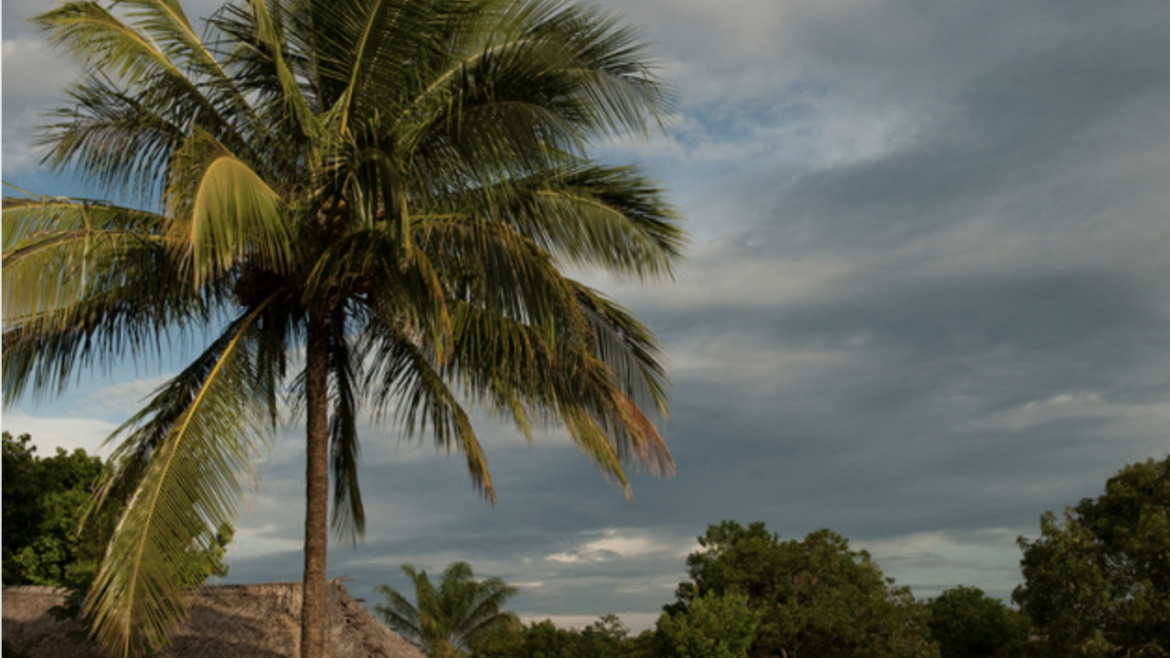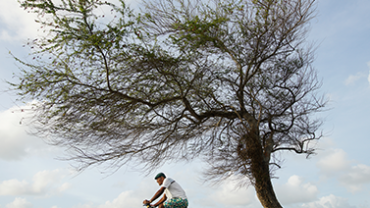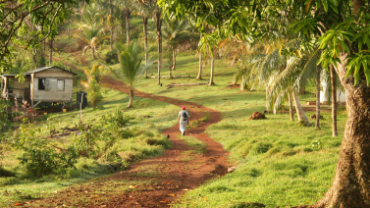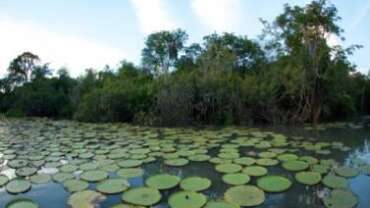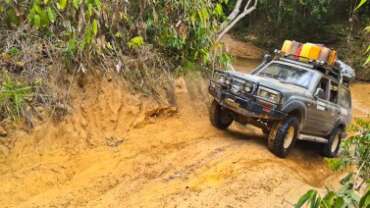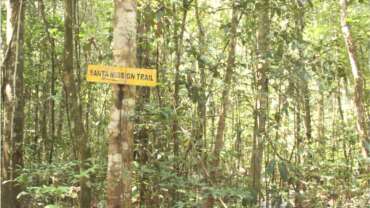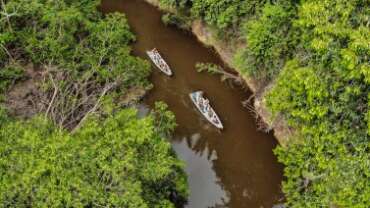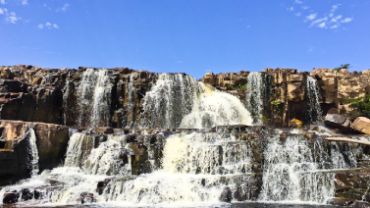Beaches in Guyana
Set along the Atlantic Ocean, Guyana’s coastal regions are distinctly differentiated from one another. Explore pristine, postcard perfect tropical beaches along Shell Beach in the undeveloped northwest coast. The rest of Guyana’s coastland is mostly sparsely populated with the exception of Georgetown and the surrounding communities where most of the population resides.
63 Beach
An infinite stretch of sand, bordered by the vast Atlantic on one side and coconut trees on the other, #63 Beach lies north of Corriverton . It is an offbeat tourist destination, but ideal to unwind in if you do not like to share a serene spot with many. #63 Beach is ideal for swimming, picnicking, jet skiing or just lying in the sun. An annual Duck Curry competition brings hundreds of locals from the town and other close by places to enjoy a day of communal cooking and festivities.With swaying palms and twenty-four seven sea breezes, #63 Beach is like a teaser to the rest of the long coastline of Guyana as only a small percentage is developed.
THINGS TO SEE AND DO
Village Life
Being close to Corriverton and Skeldon, #63 Beach allows access to travellers to have a peek into what daily life at a Guyanese town can be like. Roam the markets, eat at local stalls and enjoy the laid-back pace of the coastal Berbician life.
Seawall
If you are looking for the best spot in Georgetown to watch the expansive Atlantic Ocean, then there is no better place than the Seawall. This 280-mile dyke that was constructed to keep the city safe from the Atlantic storm surges, also contains the soul of Georgetown. Go here on a Sunday evening for a few hours of people watching, as hundred flock here to cap the weekend off with refreshing strolls along the sea. Read more about Georgetown and the nearby attractions here.
Shell Beach
The 90-mile stretch of pristine beaches on the northern shores of the country is one of the best conservation hotspots and nesting sites for turtles. March to August is the period when four of the eight sea turtle species of the world, come to lay eggs here. The Green, Hawksbill, Leatherback and the Olive Ridley species have made this a regular nesting spot, offering a one-of-a-kind hot spot for wildlife enthusiasts. The nine sections of Shell Beach are passionately protected and can be visited only with permission from the Protected Areas Commission. The leading turtle biologist, Dr. Peter Pritchard , started conservation efforts in1960s. Later Audley James, an ex-turtle hunter joined hands to fortify efforts. Due in part to its highly remote location, the species continue to thrive here.
THINGS TO SEE AND DO
Turtle Hatching
Watching turtle hatching and releasing into the sea requires permission from the Protected Areas Commission and camping at the beach with modest facilities. Serious wildlife lovers typically opt to sign up with tour operators to see the entire process. Female turtles dig an egg chamber and fill it with around 100 eggs before covering it with sand. The hatchlings emerge around 45 to 70 days later, making their way to the water, furiously moving their flippers. Experts say that between 15 and 40 years later, many of these same hatchlings will return to Shell Beach to continue the cycle. This is a great adventurous and educational trip as a weekend getaway from Georgetown.
Wildlife Spotting And Bird Watching
More than 250 species of birds and 30 of mammals have been identified in the Shell Beach Protected Area. Look out for the ibis, herons, egrets, flamingoes, antbirds, toucans, macaws, Harpy Eagles and more. Amongst mammals, sightings of jaguars, manatees, capuchin monkeys, tapirs, sloths and others are commonly spotted. With a large array of wild habitants, this is one of the most unique wildlife getaways in the country.
Village Life
Adjacent to Shell Beach Protected Area, Warapoka is the closest indigenous community that caters to travellers . One of the prime fishing spots in the region, the members of the community recently embarked on establishing a community-owned and operated eco-lodge for travellers. Sustainable catch and release sport fishing is one of the key activities visitors to the village can enjoy. The much sought-after tarpon, lou lou and bashar fish species are just a few of the more exotic fish that populate these waters. There are also several Harpy Eagle nests nearby, increasing the likelihood that one will be nesting when you visit.



